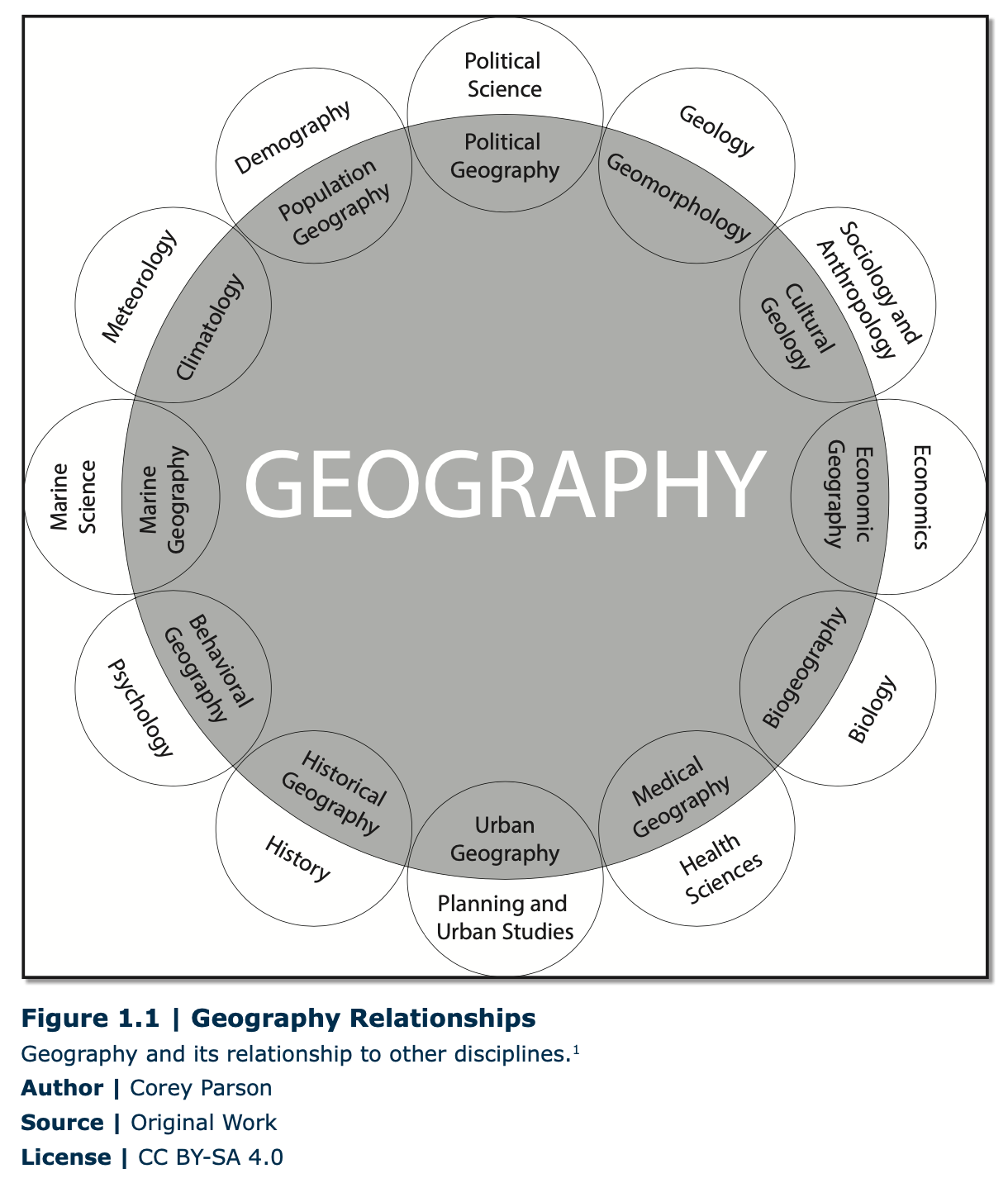1.2: What Is Geography?
- Page ID
- 38639
The Greek word geographos from which geography is derived, is literally translated as writing (graphos) about the Earth (geo). Geography differs from the discipline of geology because geology focuses mainly on the physical Earth and the processes that formed and continue to shape it. On the other hand, geography involves a much broader approach to examining the Earth, as it involves the study of humans as well. As such, geography has two major subdivisions, human (social science) and physical (natural science). This text focuses primarily on human geography, but because the physical aspects affect humans and vice versa, physical geography will not be completely excluded, but will receive less emphasis.
Geography is the study of the physical and environmental aspects of the world, from a spatial perspective. As geographers study the Earth, the one element that binds the discipline of geography and makes it unique is studying the Earth from a spatial perspective. The spatial perspective means that the phenomenon you are studying can be displayed on a map, so geography focuses on places around the world. Geography, then, is a physical (or natural) and social science that asks the fundamental questions, “What is where, and why?” Human geography is a social science that focuses on people, where they live, their ways of life, and their interactions in different places around the world. A simple example of a geographic study in human geography would be where is the Hispanic population concentrated in the U.S., and why? A physical geography research endeavor might ask where do most hurricanes strike the U.S. coastline, and why? In addition, because the Earth is dynamic, geographers also look at how places change through time, and why, so there is a natural connection with history.
1.2.1 Geography and its relationship to other disciplines
Not only is there a connection between geography and history, but geography is also related to a broad range of other academic disciplines (Figure 1.1). If you examine Figure 1.1, you may find your own major on the outside margin of the circle, with the corresponding subdiscipline in geography on the interior of the circle. Again, if a phenomenon can be depicted on a map and studied from a spatial perspective, it is geographical. A basic example would relate to the health sciences or medical geography, the subfield of geography that focuses on the spatial patterns of various aspects of health. For example, when the spread of a disease from its source area is mapped, medical professionals can get a better idea of the causes of a disease and the mechanisms of its transmission. Often, the understanding of cultural practices or the environmental conditions (such as the habitat for a mosquito-borne disease) can shed light on the process of how the disease operates. Another example of how geography relates to other disciplines is in economicgeography, the subfield that examines the different economic activities in various places, and how places interact economically. A fundamental concept in economic studies is that the location of a business is often important to the success of that business. If the business is located in close proximity to its clientele, for example, the customers might be more likely to visit that restaurant, store, etc. on a regular basis. A business owner would be wise to consult maps of both transportation networks as well as the population of the customers to which they intend to cater.



